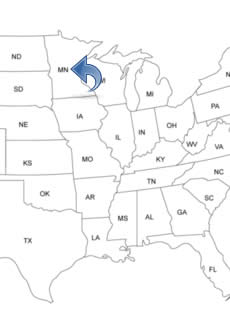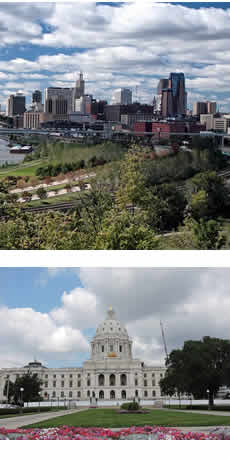MINNESOTA PEOPLE SEARCH!
- ✔ Contact Info
- ✔ Phone Numbers
- ✔ Criminal Records
- ✔ Income Info
- ✔ Neighbors
- ✔ People's Age
- ✔ Property Ownership
- ✔ And Much More
Saint Paul, Minnesota
Saint Paul is located in the southeastern part and is the capital and the second largest city in the U.S. State of Minnesota. Saint Paul is the county seat of Ramsey County. The city is second in the USA in the number of higher education institutions per capita. Saint Paul hosts a number of professional sports teams. The most recognizable building in the city is the First National Bank Building on Fourth Street.
To See And To Do In Saint Paul
- Como Park, Zoo, and Conservatory
- Minnesota Children's Museum
- Minnesota Museum of American Art
- The Saint Paul Cathedral
- Grand Avenue
- Wabasha Street Caves
- Landmark Center
- Science Museum of Minnesota
- Minnesota History Center
- The Saint Paul Chamber Orchestra
History Of Saint Paul - Timeline
The settlement originally began at present-day Lambert's Landing in 1837. Traders and farmers arrived and settled. In 1841, the Chapel of Saint Paul was built. In 1847, the first school opened in a cabin. In 1849, Saint Paul was named as the capital in the state of Minnesota and the newspaper "Minnesota Pioneer (St. Paul Pioneer Press) was established. In 1849, the neighborhood of Irvine Park, west of downtown, was platted and the oldest house in St. Paul, the Charles Symonds House, was built there in 1850.
In 1854, Saint Paul became a city, a capitol building was built, a volunteer fire department was established, and the Hamline University was established. In 1855, Die Minnesota Deutsche Zeitung, Minnesota's first non-English newspaper, rolls off the press for the first time in Saint Paul. In 1858 over one thousand steamboats arrived filled with settlers. In 1860, a telegraph line reached the city. In 1862 the railroad was completed. In 1870, the Church of the Assumption was built. In 1873, the Como Park Zoo and Conservatory opened. In 1874, the Macalester College was established. In 1877, the firemen got paid.
In 1880, the city had telephones and horse-drawn street cars. In 1881, a fire destroyed the first state capitol building. Three hundred people escaped, but the building, including the law library, was destroyed. The University of St. Thomas was established in 1885. In 1886, the author "Francis Scott Key Fitzgerald" was born in the city and the first "Saint Paul Winter Carnival" was held. In 1889, the Germania Bank Building and the Manhattan Building were built. In 1891, the city had electric street cars.
In 1900, more than 163,000 people lived in the city. In 1902, Landmark Center was built and served as a Post Office and as the Federal Court House. In 1904, the Cathedral of Saint Paul was completed but hundreds of other buildings were damaged and many were destroyed in Saint Paul when thunderstorms and tornadoes struck the city. In 1905, the third state capitol building opened.
In 1910, the Fitzgerald Theater opened. It is the oldest active theatre in the city. In 1929, the Minneapolis-St. Paul International Airport (MSP) started their first passenger service. In 1934, Edward G. Bremer of St. Paul, was kidnapped by the Barker-Karpis gang. His ransom of $200,000 was one of the largest ransoms in the United States. The kidnappers were later caught and convicted.
In 1936, John Dillinger had a gun battle with FBI agents in Saint Paul. He escaped. In 1972, the apartment complex "Skyline Tower" was completed. In 1985, the Ordway Center for the Performing Arts in downtown opened. In 1987, the office tower "Wells Fargo Place" was completed. In 2000, the multi-purpose arena "The Xcel Energy Center" opened and the ice hockey team "Minnesota Wild" played in the NHL for the first time.

